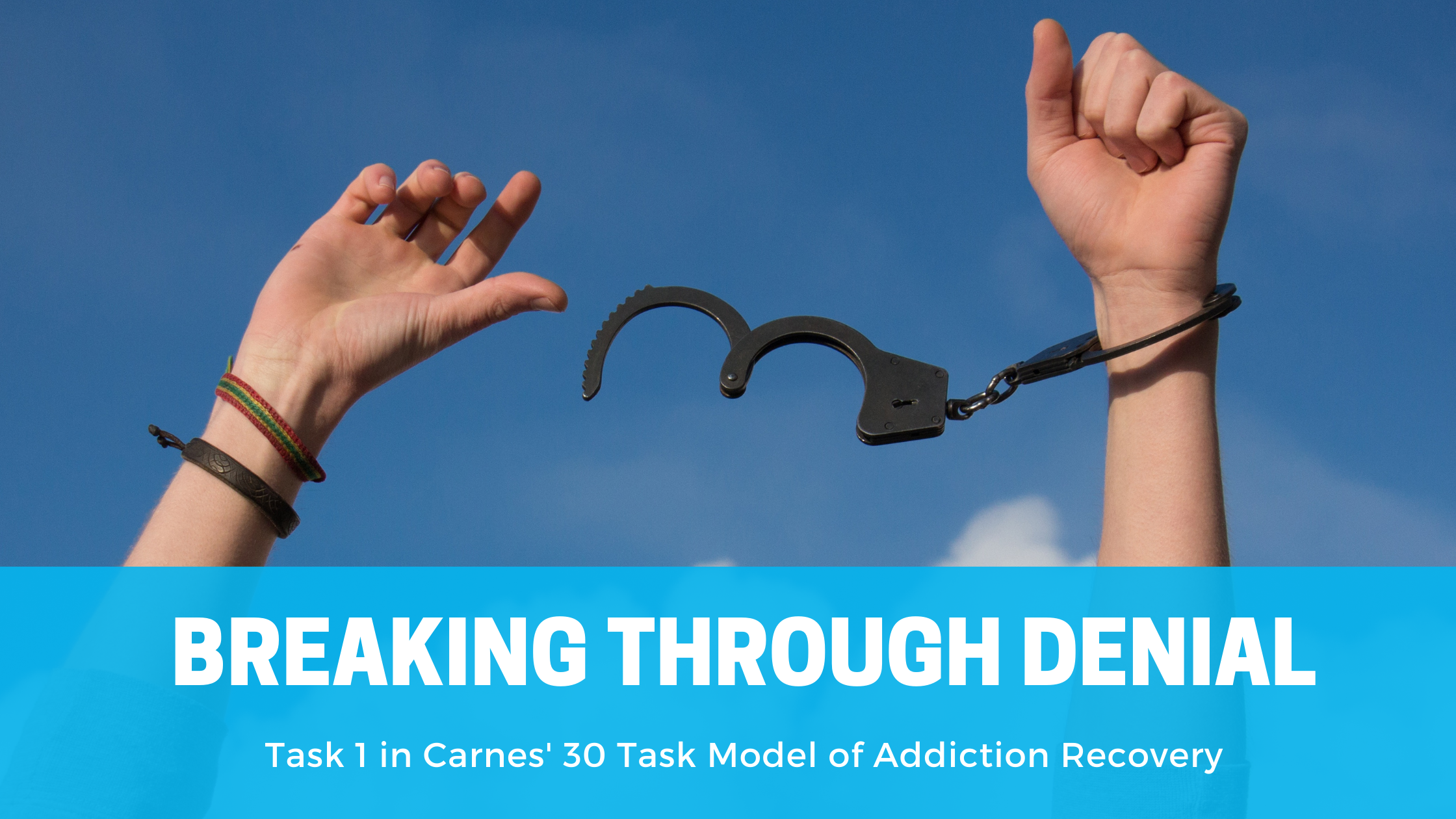How many thoughts would you guess pass through your mind in a single day? Let’s imagine you’re out to eat with a friend. Even with your best intentions to stay present and listen, there’s a running commentary going on in your mind. What are some of the thoughts you might have? I wonder what she’s thinking of me. Should I have said that? I sound like an idiot. I’m still so angry from that meeting with my boss this morning. He’s so overbearing and impossible to work with. What am I forgetting from my grocery list? I’m so forgetful, I must be losing my mind.
Needless to say, these thoughts pull you out of the moment and make it more challenging to listen. You might find yourself censoring what you say out of insecurity, comparing yourself to your friend, or even cutting your lunch date short to get back to the office quickly because you’re feeling stressed.
What’s happening?
When you find yourself stuck in your thoughts, you’re likely dealing with cognitive fusion, another destructive mental strategy that acceptance and commitment therapy (ACT) addresses. When we’re in cognitive fusion, we believe that the workings of our internal mind (thoughts, memories, images, reasoning, comparisons, etc.) are true and real, such that we allow them to influence our behaviors. Our thought patterns have power and control over our lives and seem to make our decisions for us.
Often these thoughts include cognitive distortions, like catastrophizing or all-or-nothing thinking. They can include negative self-talk or beliefs about yourself that you hold to tightly based on past experiences. When we believe these things, they become self-fulfilling prophecies. For example, our fears of being awkward contribute to social anxiety or discomfort. We then avoid social situations to try to manage the uncomfortable feelings that coincide with them, adding to the dynamics of experiential avoidance that lead us to disengage rather than live out what is important to us.
There are several different types of cognitive fusion that we may face. They include:
Rules: “shoulds” for self or others, ways the world or people “ought” to work or be. Example: People should always be kind and respectful.
“I” stories: identity-based statements about ourselves that become self-definitions and self-fulfilling prophecies. Example: I’m always late.
Judgments/evaluations: beliefs about what is fair vs. unfair, good vs. bad, or right vs. wrong. Example: It’s unfair that I keep getting passed over for the promotion.
Meaning-making/reasons: justifying what I do or looking for the answer to the “why?” question to explain what happens. Example: I’m single because I’m so socially awkward and unattractive.
Worries about the past/future: overfocus on the past or anxiety about the future that pulls us out of the present moment. Example: How am I ever going to pass that exam next Friday?
“You/They” stories/comparison: beliefs about others that become self-fulfilling prophecies, particularly as they relate to us. Example: She’s better than I am at everything.
Cognitive fusion is a problem because our thoughts and feelings then run our lives for us and toss us around at every whim of our minds. Yes, thoughts can feel very powerful. Memories that pop up as flashbacks, ingrained patterns of meaning that carry shame, and automatic responses that elicit strong emotions can feel crippling at times.
Yet it is important to recognize that, though these thoughts can feel powerful and real, they may not have as much power as we think.
What is defusion?
Consider the image of defusing a bomb, as in an action movie. In order for the hero to save the day, they must somehow disconnect the power this ticking time bomb has in order to keep it from destroying its target.
Similarly, our thoughts act as ticking time bombs that can unleash an explosion of painful thoughts and emotions, followed by destructive behaviors that lead us away from our values. We can defuse the thoughts by removing the charge that sets them off: the automatic behavioral reaction that comes after the thoughts. We do this by observing our thoughts from a place of distance rather than getting caught up in the storm they create in our minds.
The previous two concepts we’ve discussed in this Acceptance and Commitment Therapy series are essential building blocks to support this defusion. Defusion helps us to practice acceptance to willingly encounter painful thoughts and feelings, rather than running away or avoiding experiences we find uncomfortable. It is also essential for us to remain in the present moment in order to be aware of these thoughts from the role of an observer.
Principles
Thoughts are just thoughts.
Thoughts do not have the power to control your life. You can have a thought come into your mind, but choose to act in a way that is different from your default response to the thought. They do not have to control what you do.
Thoughts don’t last forever.
We find some surprising results when we pay attention to how many varied thoughts we have in a day. To test this, sit quietly in a room with a pad of paper and write down every thought that pops into your head for 5 minutes. When you’ve completed that list, count how many thoughts you had and multiply that number by 192 to create an estimate of how many thoughts you have in a day. Recognizing that your thought patterns are fleeting and eventually come to an end can reduce their power.
How we relate to our thoughts is more important than the content of the thoughts.
ACT approaches thoughts differently from a traditional cognitive-behavioral approach, which places emphasis on understanding and changing the content of your automatic thoughts and core beliefs. While reframing thoughts can be beneficial for some people, ACT theory emphasizes that our thoughts are powerful because we assign that power to them. Rather than attempting to change a thought that may not be changed very easily, it is more effective to defuse the power of those thoughts.
This approach is helpful if you have tried to change the way you think about yourself or others for a long time, but aren’t finding those changes sticking. Rather than continuing to try to force a change, allow the thought to be present, but reduce its power by taking an observer role and acting in accordance with your values instead.
Thoughts, emotions, meaning-making, memories, images, and other internal experiences are just products of the mind.
These internal workings don’t have any greater meaning than that. They don’t have the power to force us to behave in any particular way, despite the fact that we may believe they do.
At the same time, we can choose situations in which we want our thoughts to have an influence over our behaviors. We can choose to engage the thoughts that move us more toward what is important to us. In this way, we’re not eliminating the power of our thoughts entirely, but making an intentional decision of how much power we want to give to those thoughts.
Practices
Keep a record of your thoughts.
Listen to and track your thoughts, noticing whether they carry a positive, negative, or neutral charge. Identify if there are any strong emotions that go alongside them. Notice what behaviors flow naturally out of your thoughts and emotions. Are those behaviors you want to be engaging in? Or are they impulsive, reactive, automatic responses? You can find a helpful tracking tool for this step here.
Affirm your role as an observer of your internal world.
After recording your thoughts, you are in a better position to recognize and notice thought patterns as they come up. When you have a distressing, painful, or challenging thought, see what happens when you intentionally remind yourself of the phrase, “thoughts are just thoughts.” How does it impact the power of that thought?
Similarly, you could label your internal experience as if you were an outside observer with words like, “I’m having the thought…” or “I’m having the emotion…”. Another strategy is to imagine your thoughts being played on a radio or told as a story outside of yourself.
Visualize the thoughts passing by.
Often we fixate on our thoughts, which gives them the illusion of power. We obsess over them or attempt to stop them from coming up, which just entrenches them more deeply in our minds. Instead, use this commonly practiced mindfulness technique: instead of trying to control, change, alter, or rid yourself of your thoughts, just notice them passing by. Using a visual cue, like imagining thoughts like cars passing on the street or clouds floating by in the sky, can help you to allow them to pass through your awareness without giving them undue attention. You’ll notice that your thoughts don’t need to command your focus all the time, but that they can come and go.
Write the thought down and look at it regularly.
If you notice a pattern to your distressing thoughts, such as a repeated phrase or belief that feels like it controls you, take that thought and write it down on something you can carry with you, such as a notecard or post-it note. Throughout your day, pull out the note with your thought on it and read through it. Notice how it feels when you look at it. See yourself as an outside observer of that thought.
Notice how the relationship you have to the thought changes. The words on the paper do not change, but the way you interact with them will differ at various points throughout the day. This is a good indicator of the importance not of the content of the thought, but of how you relate to it.
Imagine a common situation influenced by this thought, but with a different outcome.
Choose this thought you’ve written on the card, another common thought pattern you’ve identified, or an image or memory that tends to impact your behaviors. Now imagine yourself having that thought, but making a different decision about how to respond to it. What behavior might line up better with what is important to you? What would change? How would an outside observer see you? Would it be possible to act in a different way while still having the thought?
Take a risk and put your different outcome into practice.
Now put into practice this shift in behavior in response to your thought. Release the thought using a statement like, “thoughts are just thoughts,” and take a risk to act in a way that aligns with what is important to you. For example, if you’re in a social situation with the thought, “I’m too awkward to talk to people like them,” take a risk by engaging in conversation with one of those feared individuals.
Recognize that this will not eliminate the thoughts. In fact, taking the risk may even intensify your discomfort. But this practice of stepping out and making a change in your behavior while still experiencing the uncomfortable thoughts can teach you that your thoughts don’t have the power you think they do. You still have control over your own actions such that you can respond to challenging circumstances in alignment with your values.













